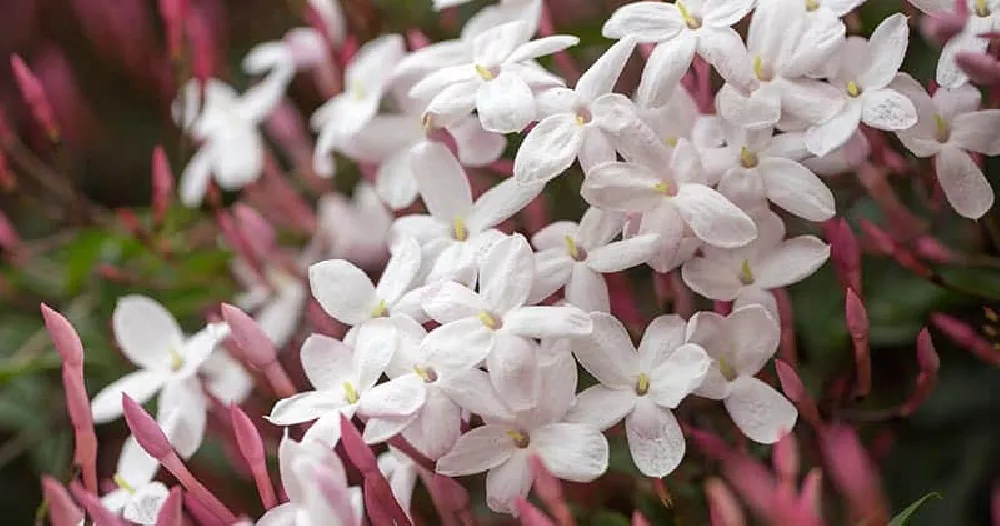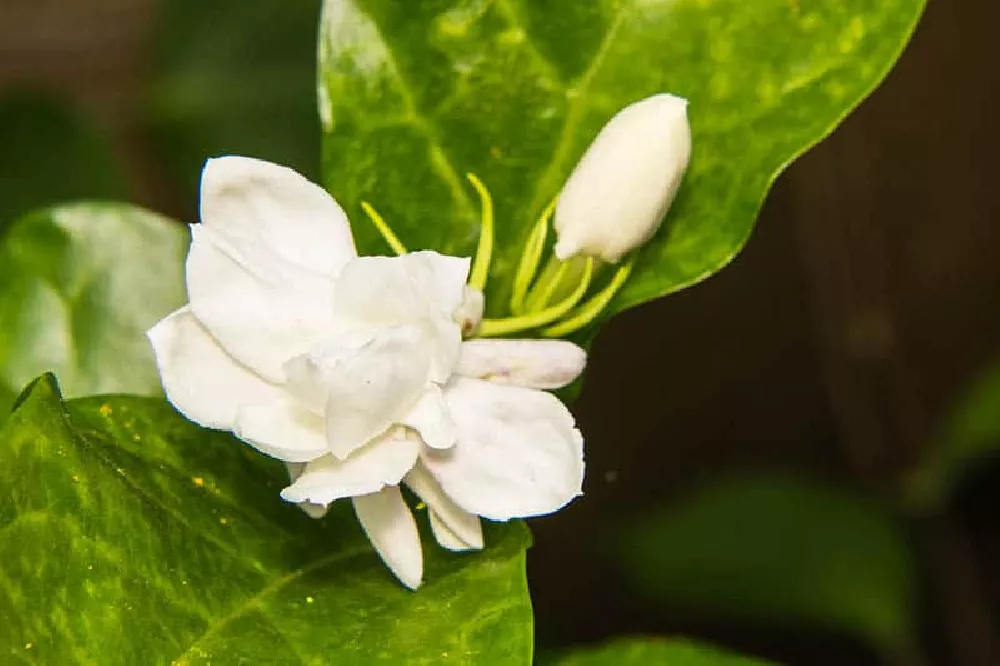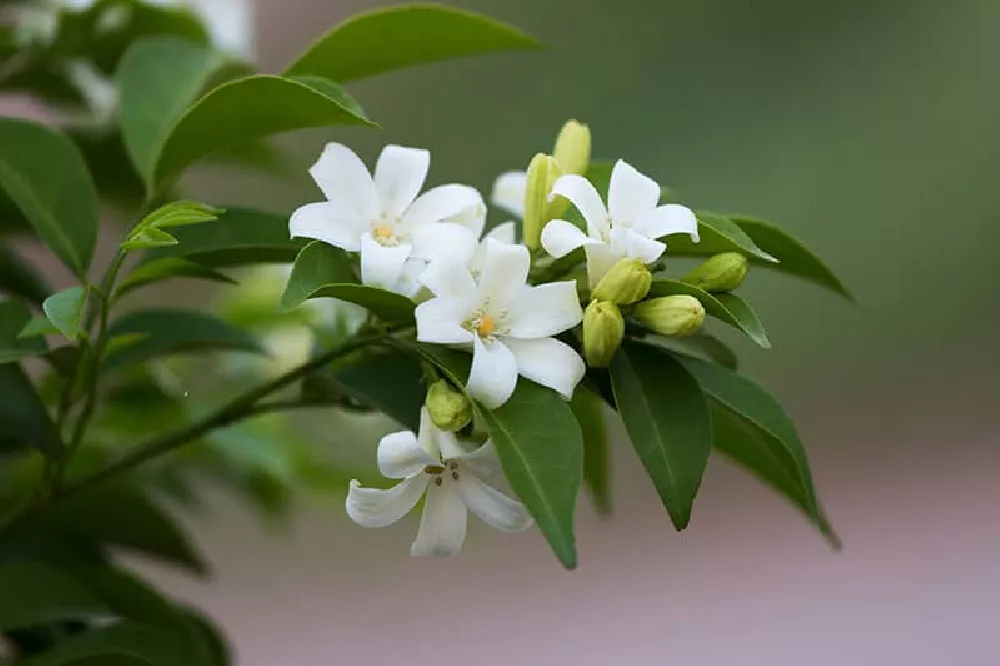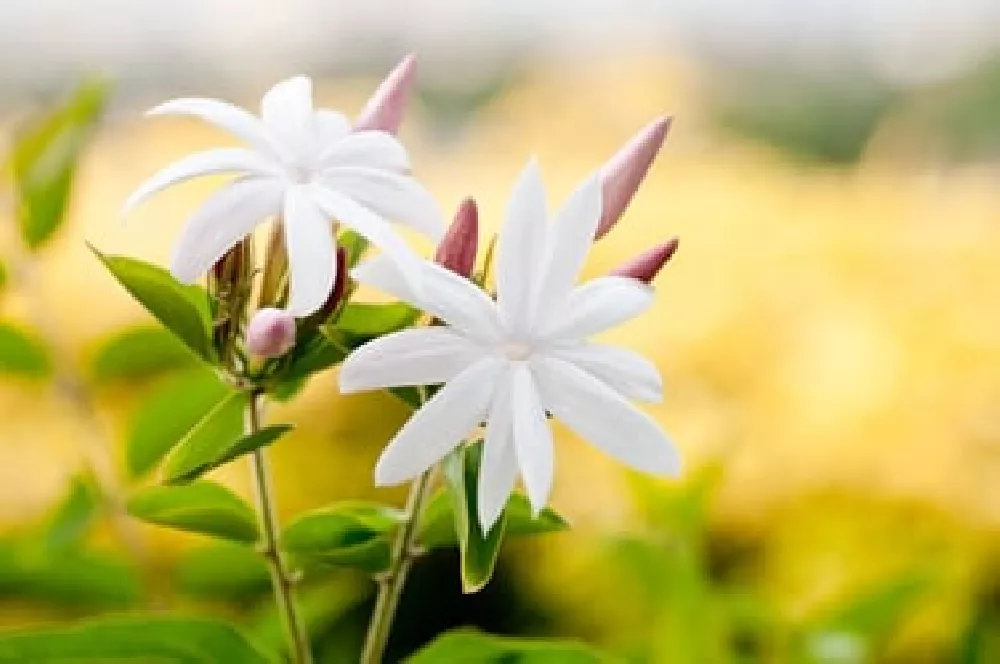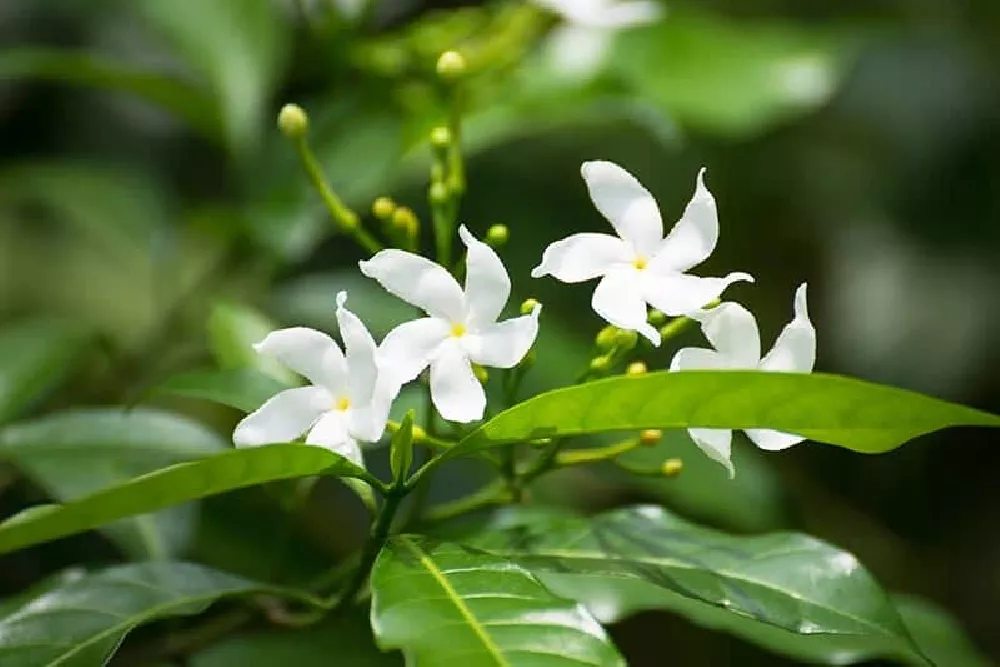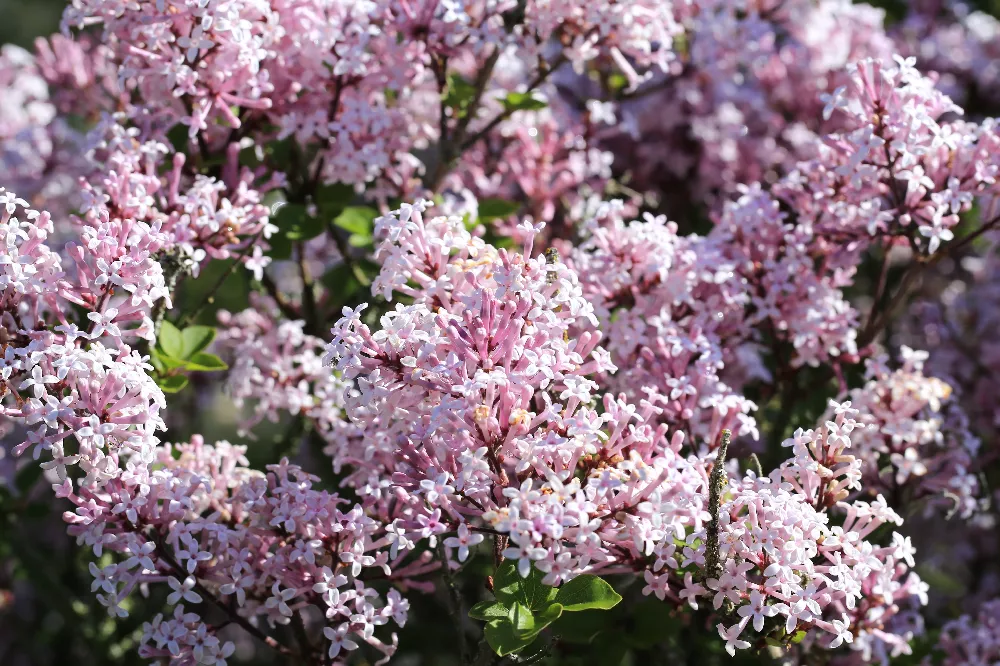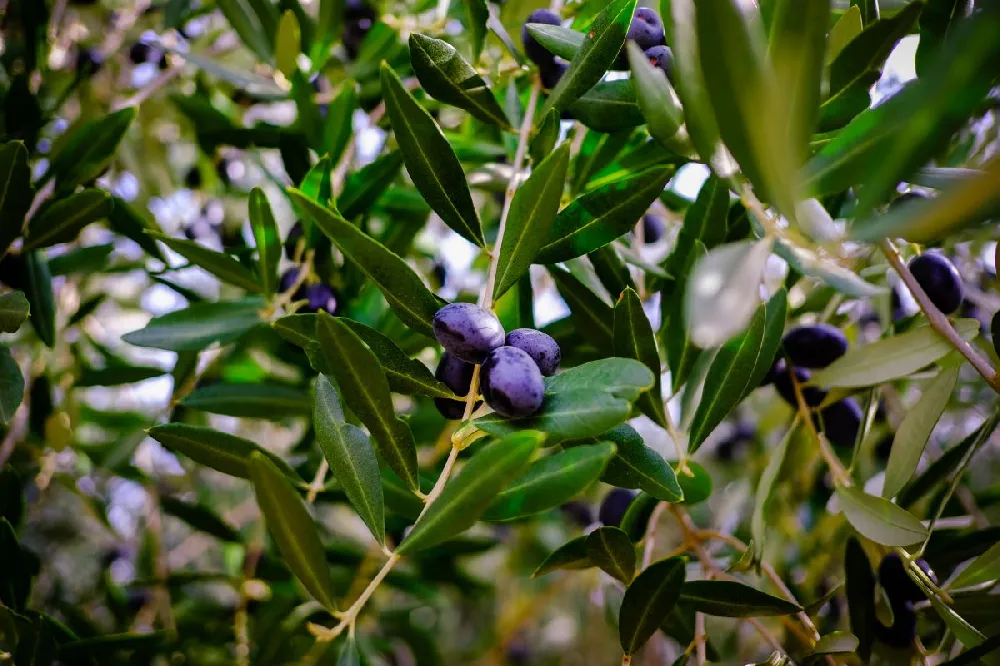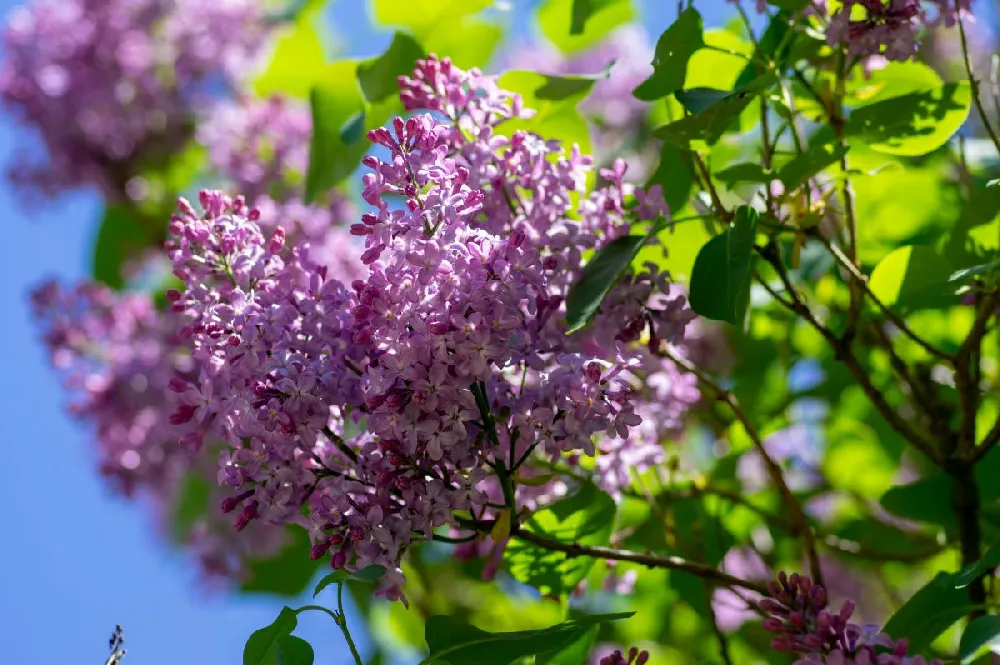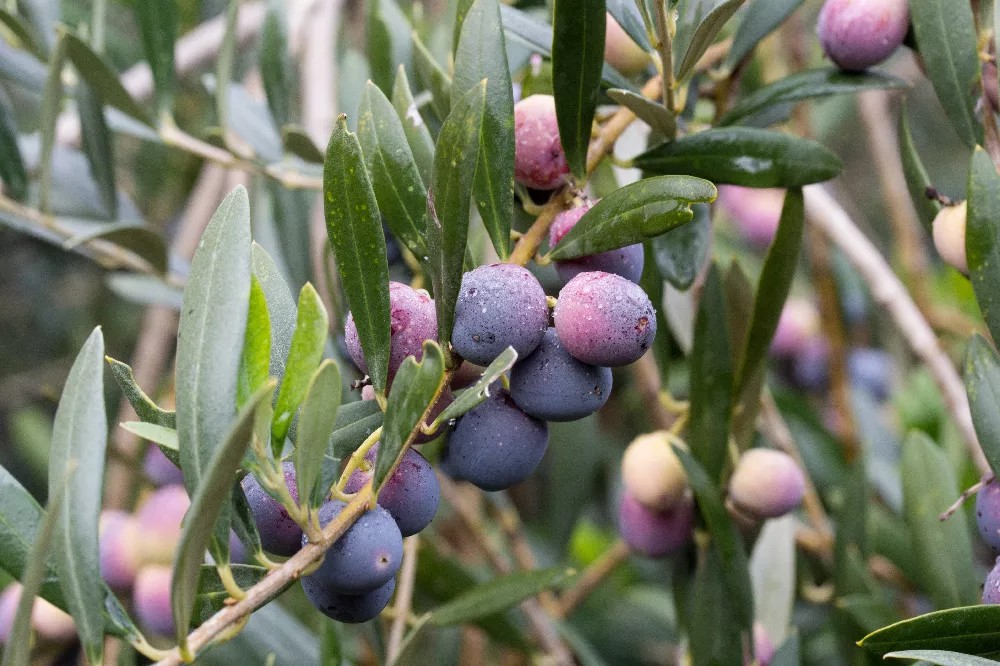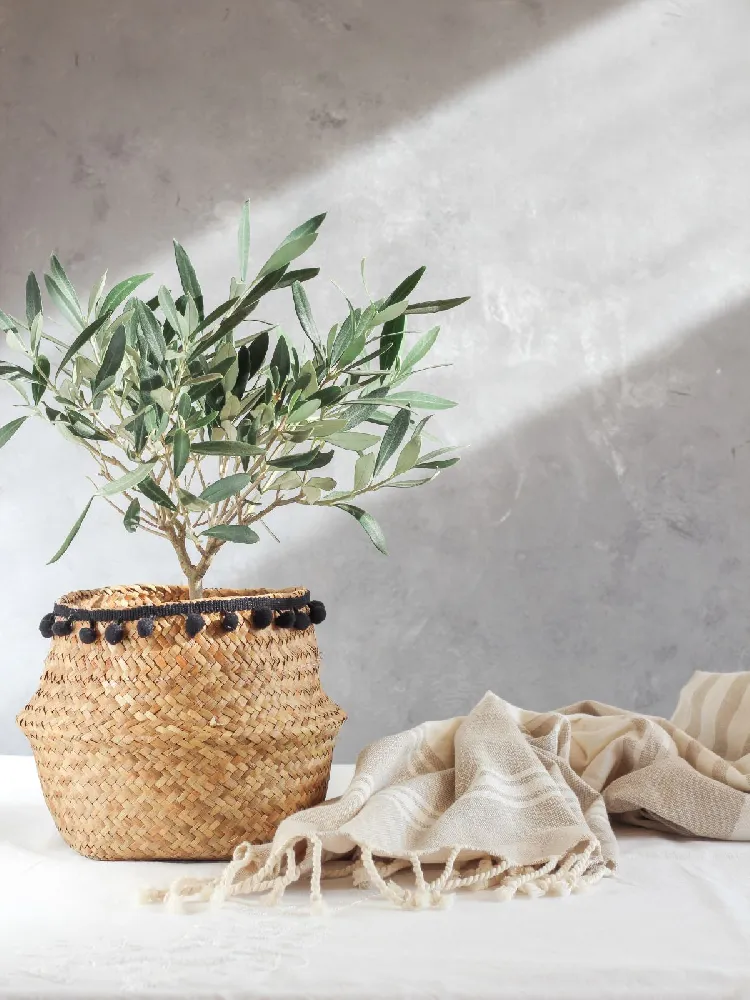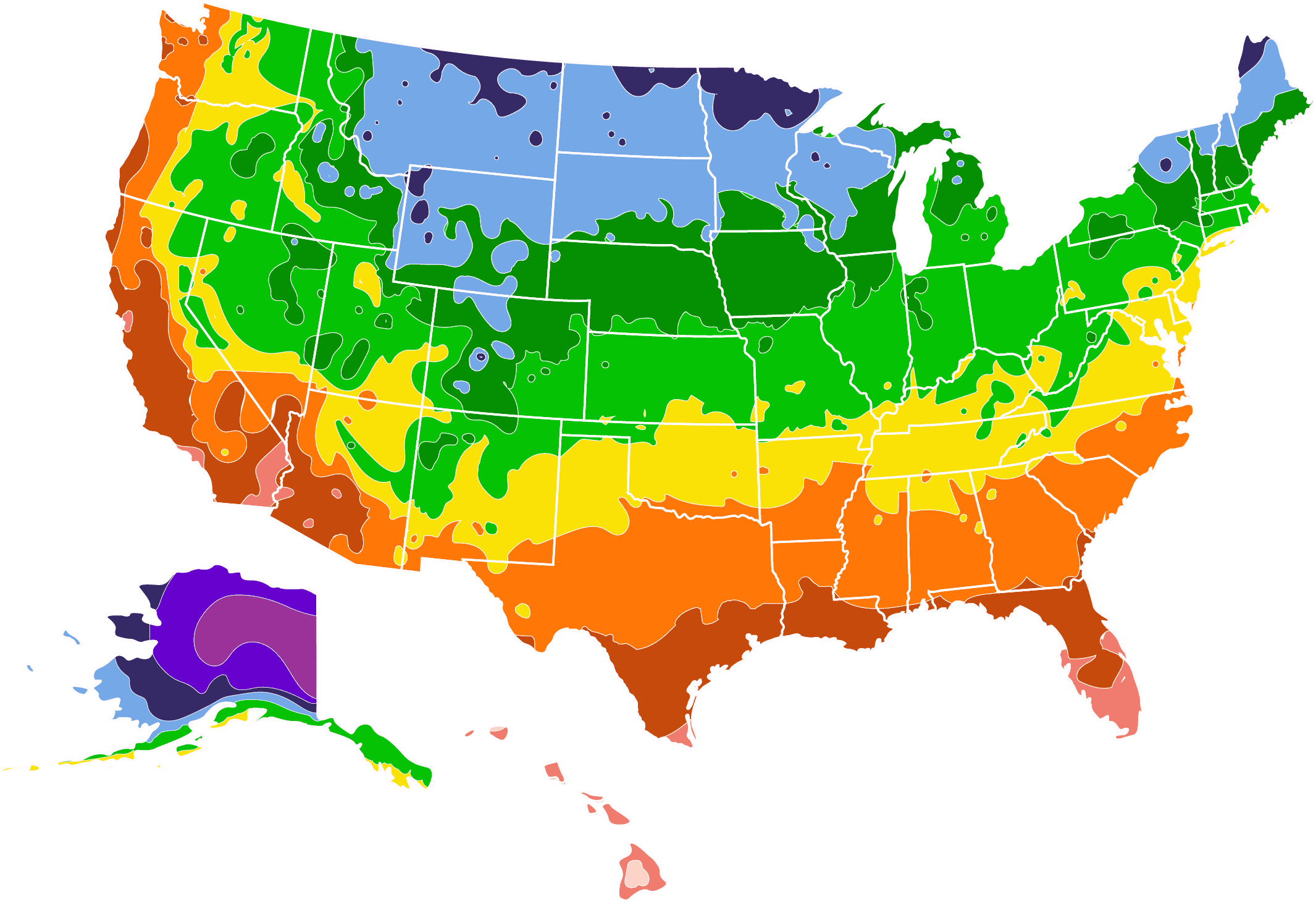Jasmine Plants for Sale - Buying & Growing Guide
Although jasmine is known for its lovely scent, the plant should also be popular for its versatility. There are bush jasmine and vining jasmine. Some jasmine are evergreen while others are deciduous. It loves a sunny spot outdoors, but grows beautifully in a container as well. Whatever your purposes, there is probably a jasmine plant that will fit your needs.
Enter your zip code to find nearby stores that may carry this plant.
How to Grow Jasmine
How to plant jasmine
Jasmine likes soil that drains well and is loamy (sandy). If planting it in clay-heavy soil, dig in several shovels worth of peat moss. It does best in full sun. Some varieties can handle partial shade — read the plant tag to find out if yours needs less than full sun (six to eight hours daily). If you are growing a vining variety, plant near a fence, trellis, or other support.
Dig a hole in your chosen spot that is twice as wide and a little deeper as the root ball . Mix some compost into the dirt in the hole. Unpot your plant and tease out any circling roots to avoid them girdling and choking the tree. Place it in the ground at the same level it was in the pot, and fill in with topsoil enriched with compost.
Tamp down the dirt around your plant to eliminate air pockets, and water it deeply. Keep an eye on your newly-planted jasmine for a few weeks and water it whenever it starts to droop or the soil is dry to the touch. With vining jasmine, begin training it on your trellis as soon as you see new growth.
How to achieve maximum results
As a tropical plant, achieving maximum results with jasmine requires you account for its love for heat. There are more than 200 varieties of jasmine, and most of them are only healthy in USDA hardiness zones 9-11. However, winter jasmine (Jasmine nudiflorum) can be planted as far north as USDA zone 6. Jasmine makes a fine house plant, and there are dwarf varieties that are well-suited to pots, so northern gardeners can enjoy this lovely plant’s presence.
How to Care for Jasmine
Watering and nutrients
Jasmine planted in the ground needs about an inch of water a week. If they are not getting that from rain, supplemental watering is required. Container-grown jasmine may need watering more often, especially in warmer months. If the top inch of soil seems dry, give it a good watering.
Whether pot grown or in the ground, fertilize your jasmine in spring with a slow-release balanced fertilizer. Time the application to just before the new buds start growing. Your outdoor jasmine will also appreciate a layer of thoroughly decomposed compost applied around the plant’s root zone once a year. Indoor plants will benefit from a second feeding halfway through the growing season.
Pollination
Different varieties of jasmine attract different pollinators. Night-blooming jasmine, for example, is pollinated by moths; other varieties attract butterflies and bees. Jasmine flowers contain both male and female organs, but they develop at different times. However, since jasmine is not grown for its fruit, lack of pollination is generally not a problem for gardeners.
Pruning
First, remove any damaged or diseased branches from your plant whenever. You can trim off jasmine vine branches that are not growing toward support, as well as any that are tangled or unkempt. Clip off flowers after they start to fade. Regular pruning will allow for lush growth and repeated blooming.
Pests, diseases, and animals
Root knot nematodes are the most common jasmine pest. Suspect nematodes if growth is stunted and the leaves start turning yellow. They are difficult to get rid of once entrenched in the soil, so it is worth searching out varieties of jasmine that are resistant.
Jasmine is prone to fungal diseases, especially since it is often grown in moist environments. Common diseases include rust, fusarium wilt, and blight. Any of these may leave small spots or patches on leaves and stems. Fight them with a copper fungicide. To prevent them from starting in the first place, keep the area around the base of the plant free of debris. Instead of overhead watering, which wets the leaves, water by leaving your hose on at a trickle and placing it at the base of the plant.
